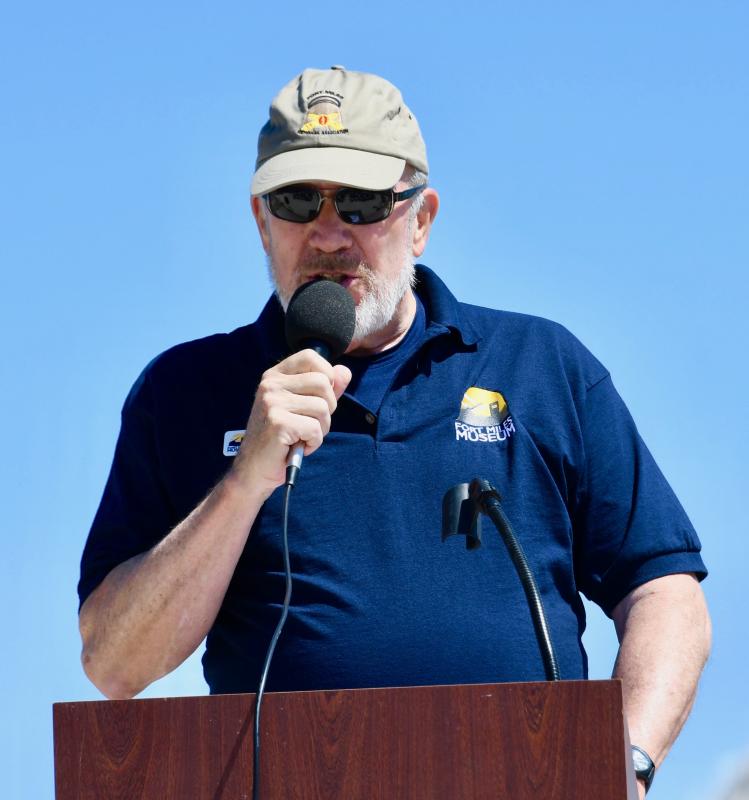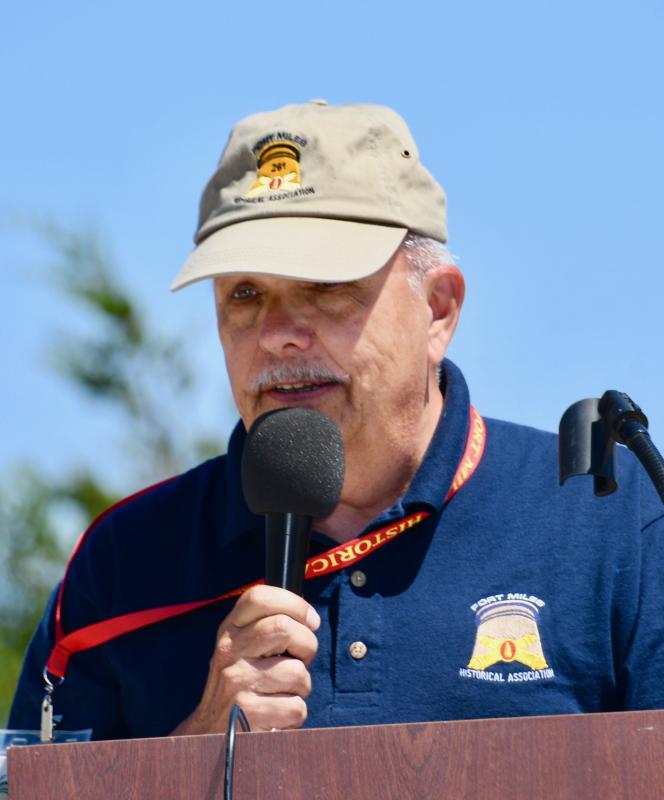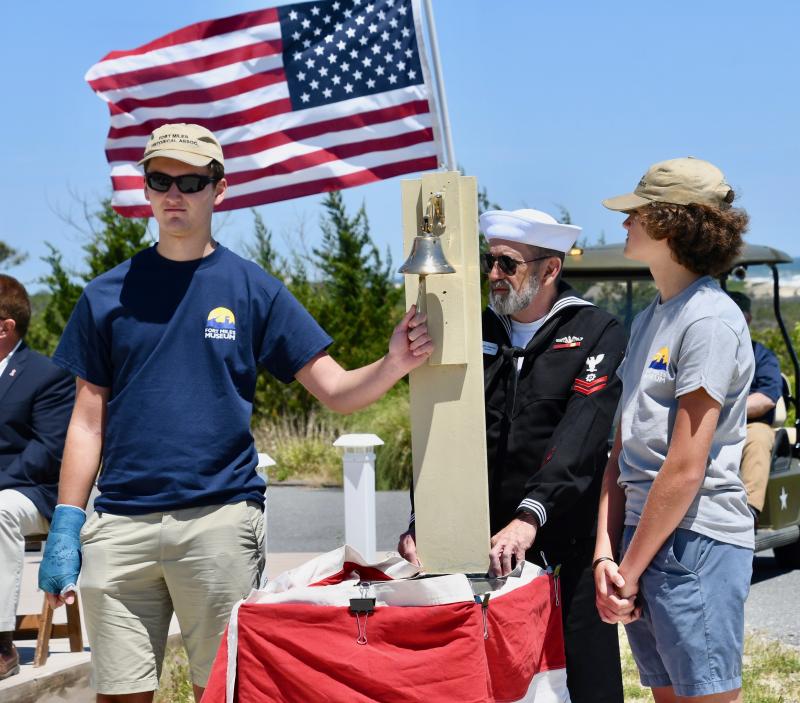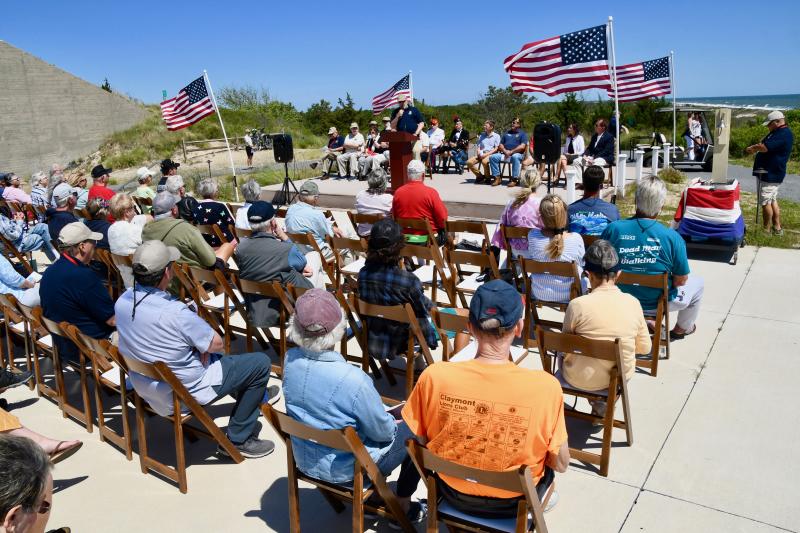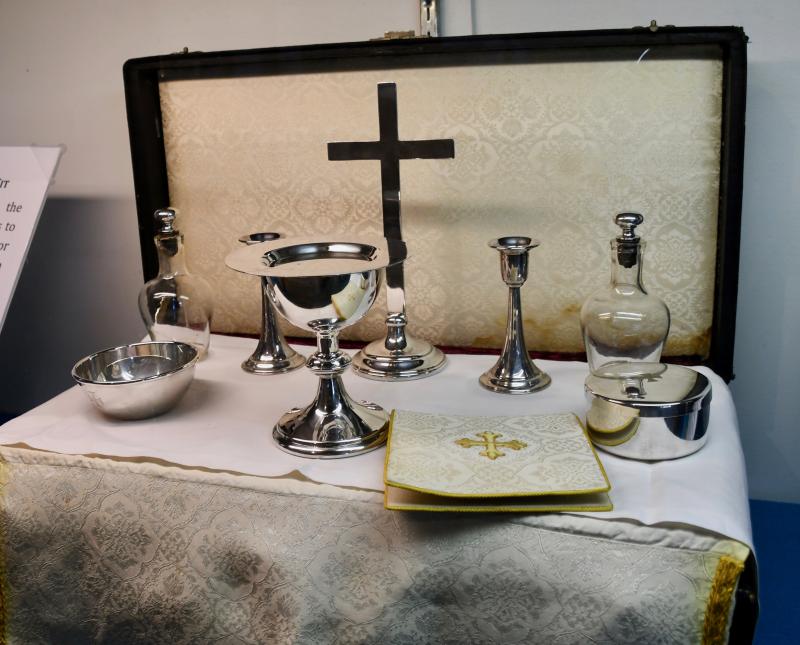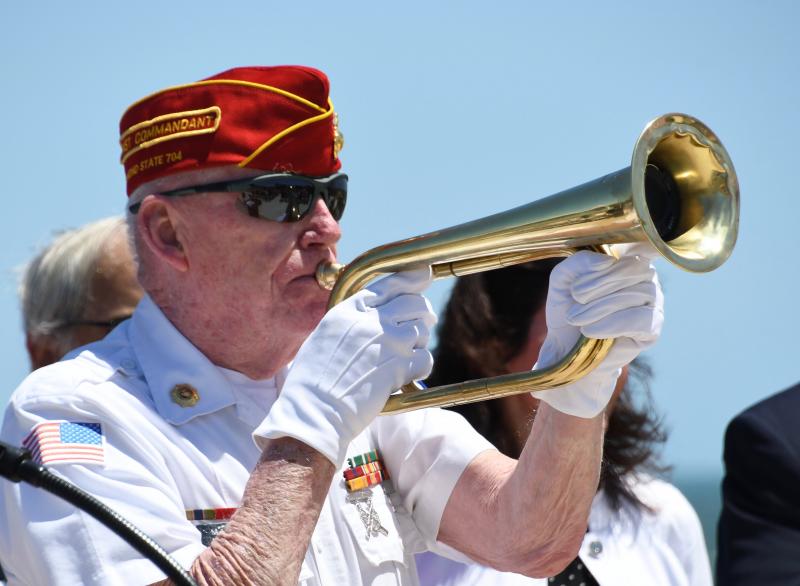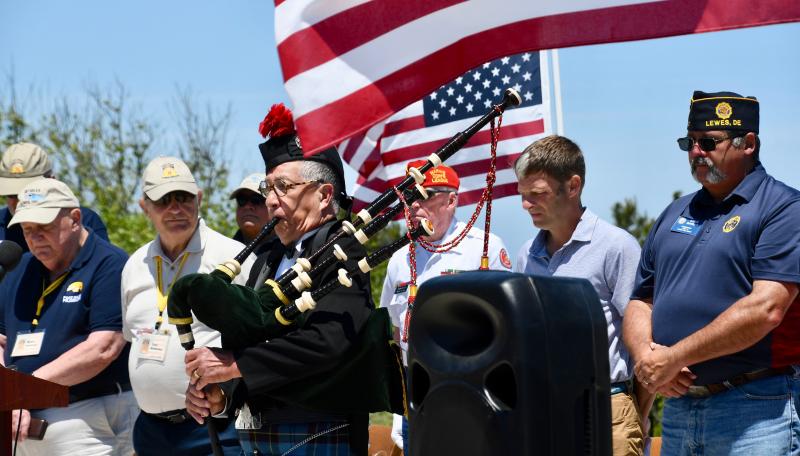Fort Miles volunteers remember D-Day
The Fort Miles Historical Association held its first D-Day memorial service June 5 on the museum’s venue area. How the June 5 event came to be has some actual D-Day history tied to it.
Will Short, FMHA board member, and docent and special events coordinator, said the Rev. Jeffrey Ross of St. Peter's Episcopal Church approached him about a World War II chaplain's kit being displayed at the church.
The kit was donated by the Rev. Carol Flett, who has been caretaker of the kit for the past 30 years. The Episcopal priest recently retired to Lewes with her husband.
And it's not just any chaplain's kit; it was literally swum ashore on D-Day, June 6, 1944, by Army chaplain the Rev. Morris Arnold, who was a captain. The Jeep he was supposed to ride onto Utah Beach capsized, and he was thrown into the water.
“He had to swim to get the kit and then run over the dunes to reach the bluffs,” Flett said. “He used it in France until he was injured [in 1945] and sent back to the U.S.”
She said the kit, which includes vestments to celebrate communion and baptisms, including silver accessories, weighs 17 pounds.
Over the years, Arnold became a friend and mentor of Flett, who has lived in the Boston area, Washington, D.C., and Maryland. Arnold, then a bishop, gave the kit to Flett for safekeeping.
Flett said chaplains fulfill a critical need for soldiers on the battlefield by not only offering religious services but also counseling. “They bring God to the soldiers and the soldiers to God,” she said.
The service included the reading of the names of 40 Delawareans who were killed from D-Day through July 31 during the liberation of France. The list includes Private William S. Marvel and Private Robert Layton Short, both of Milton.
Nicholas and Christian Schimmel rang a bell after each name was announced. The brothers are grandsons of the late Gary Wray, one of the founders of the FMHA and the driving force behind the museum.
Short said one of the main missions of the association is to tell the story Delawareans played in World War II.
About D-Day
Ed Paterline, an FMHA member, provided a history of D-Day, one of the most critical days in World War II.
He asked the large crowd to consider what the first waves of soldiers faced as they hit the beaches, especially Omaha Beach, where German resistance was most ferocious. Facing intense enemy fire, they arrived at low tide and had to run across a 400-yard beach carrying 100 to 200 pounds of equipment, only to reach an 80-foot bluff.
Above the beach, the Germans had machine gun nests, pillboxes, mortar units and bunkers with large-caliber guns aimed at the beach. In addition, he said, a German division was dug in behind the front line.
And unlike on the other four beaches during the invasion, there was no naval artillery cover, because the ships were too far out to sea due to shallow water along the beachfront.
“During the first two waves, there was no progress and the troops were shot to pieces,” he said.
Eventually, through bravery and sacrifice, soldiers were able to overrun the Germans. Those first few waves of soldiers paved the way for another 100,000 Allied troops to move inland.
By the end of the first day, 3,000 Allied soldiers were killed, including 1,465 Americans, with 427 of those casualties on Omaha Beach.
D-Day is considered the largest amphibious invasion in history and included more than 6,900 ships, more than 156,000 Allied troops, 13,000 paratroopers and more than 2,300 aircraft and 867 gliders. More than 7 million tons of supplies were shipped to the beachhead established on D-Day.
